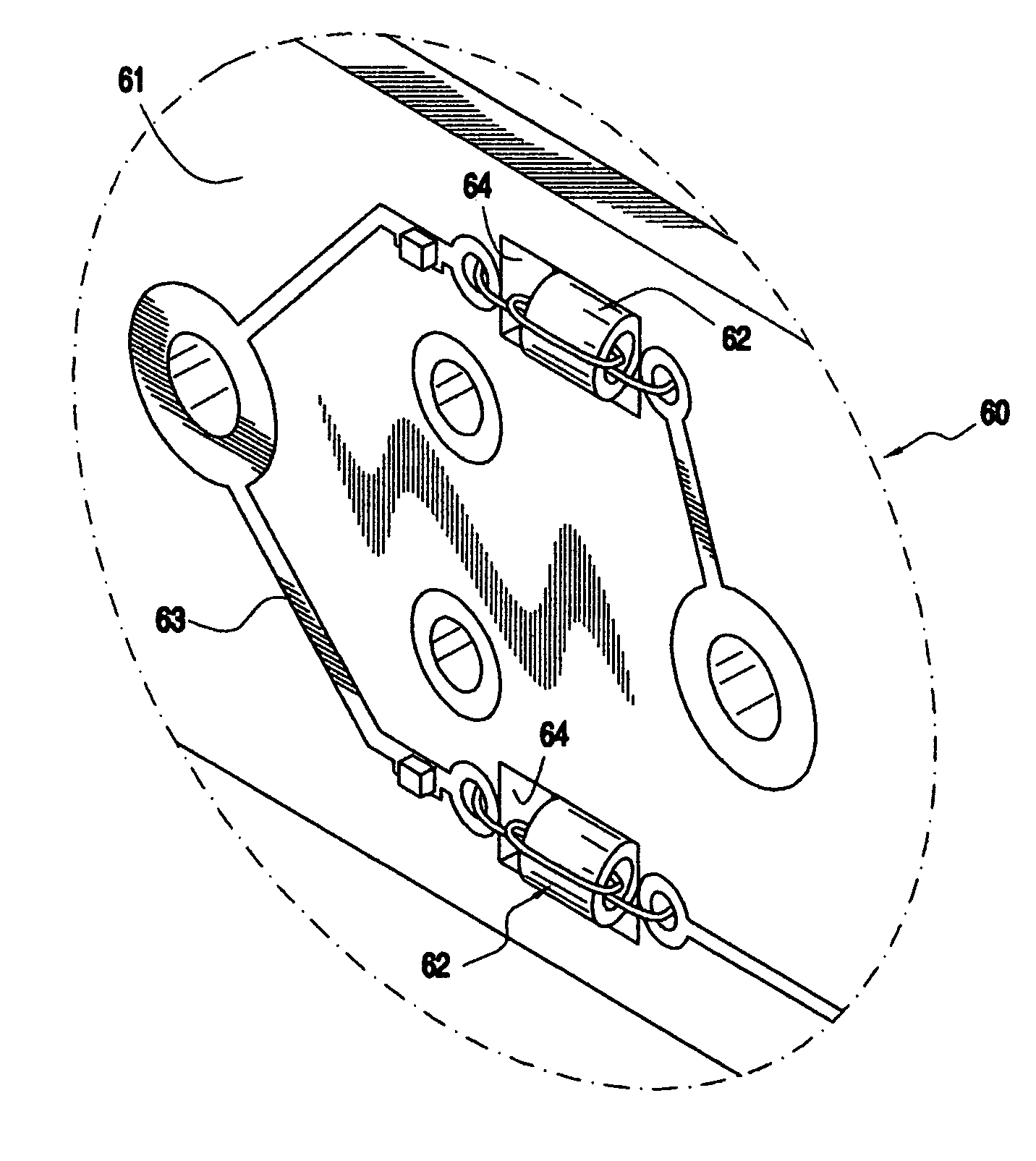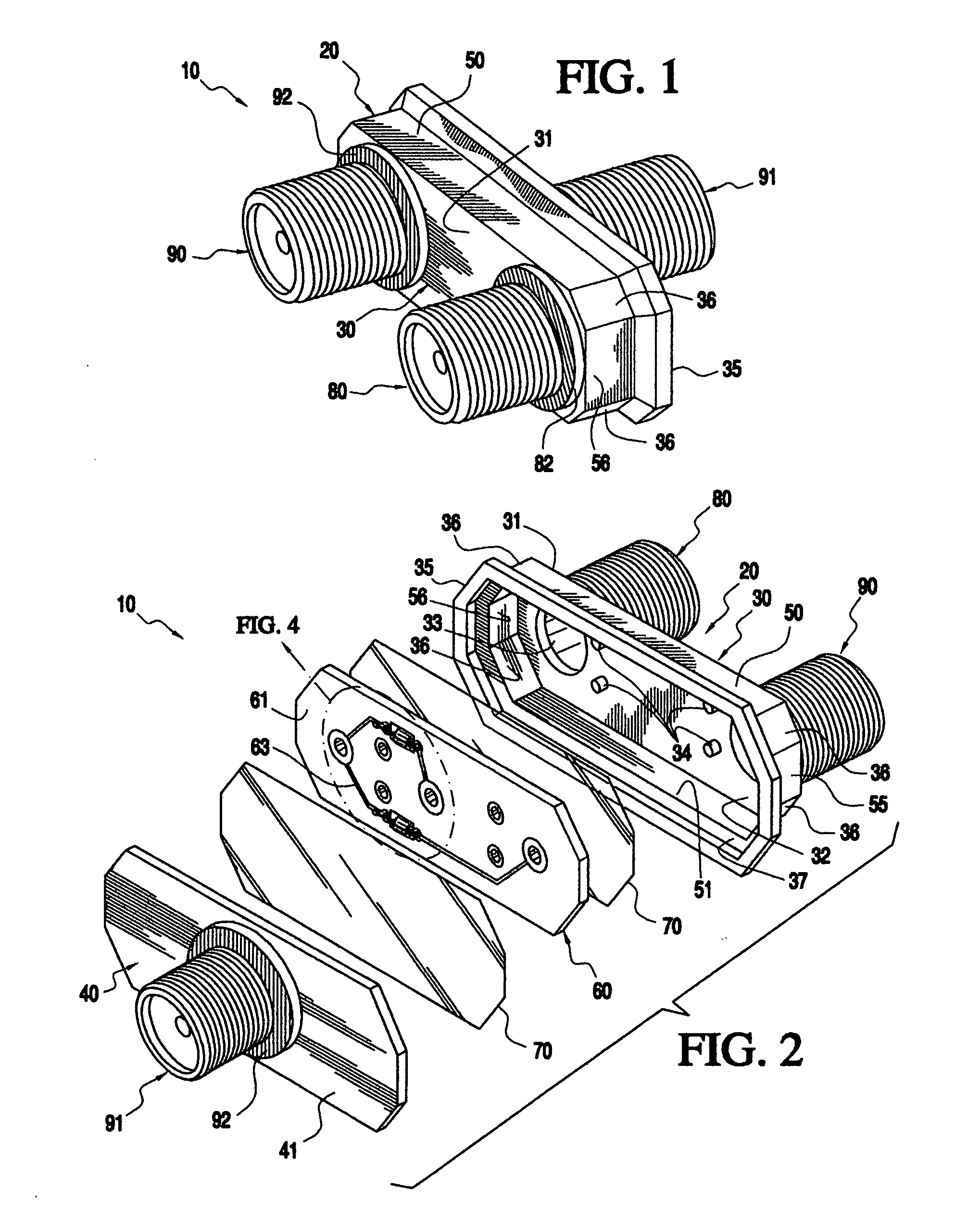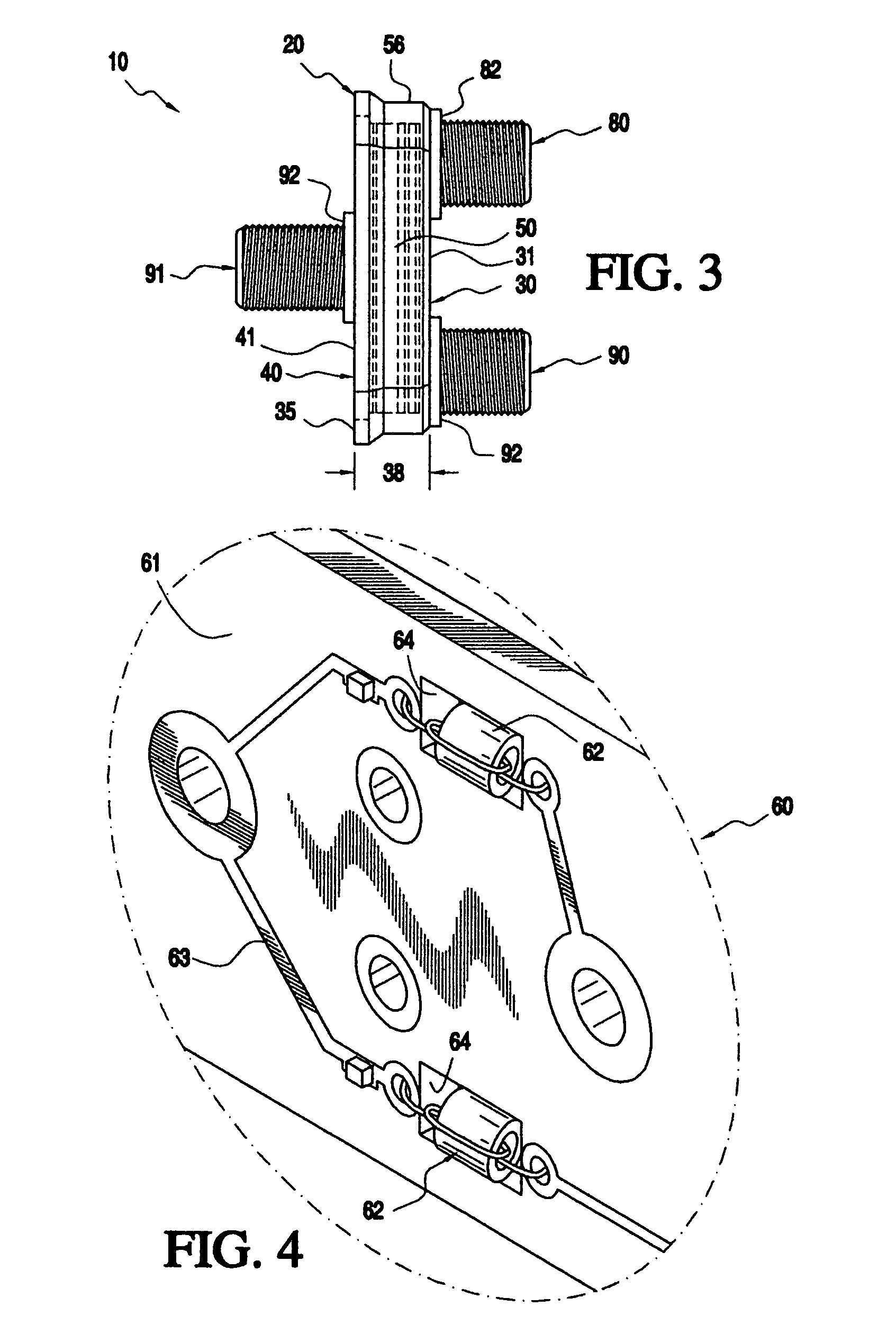Electric signal splitters
a technology of electric signals and splitters, applied in the direction of waveguides, waveguide type devices, coupling device connections, etc., can solve the problems of valuable space consumption by mounting types, and achieve the effects of consuming valuable space, and reducing the size of the splitter casing
- Summary
- Abstract
- Description
- Claims
- Application Information
AI Technical Summary
Benefits of technology
Problems solved by technology
Method used
Image
Examples
Embodiment Construction
[0039] The present invention is an electronic signal continuity device 10, wherein the device 10 in particular is an electronic signal splitter. It should be appreciated that in other various exemplary embodiments the device could include other electronic continuity devices such as, but not limited to, directional couplers, multi-switches, and amplifiers for example.
[0040] The present invention incorporates a signal splitter / combiner with a single input connector and multiple “n” output connectors. The present invention utilizes current electronic signal splitting technology, such as but not limited to the basic “Wilkinson” technique on a printed circuit board or PCB. When the present invention is used as signal combiner, the multiple “n” output connectors become multiple “n” input connectors and the single input connector becomes the single output connector. Throughout this detailed description, only the aspects of the splitter will be discussed, with the understanding that when t...
PUM
 Login to View More
Login to View More Abstract
Description
Claims
Application Information
 Login to View More
Login to View More - R&D
- Intellectual Property
- Life Sciences
- Materials
- Tech Scout
- Unparalleled Data Quality
- Higher Quality Content
- 60% Fewer Hallucinations
Browse by: Latest US Patents, China's latest patents, Technical Efficacy Thesaurus, Application Domain, Technology Topic, Popular Technical Reports.
© 2025 PatSnap. All rights reserved.Legal|Privacy policy|Modern Slavery Act Transparency Statement|Sitemap|About US| Contact US: help@patsnap.com



